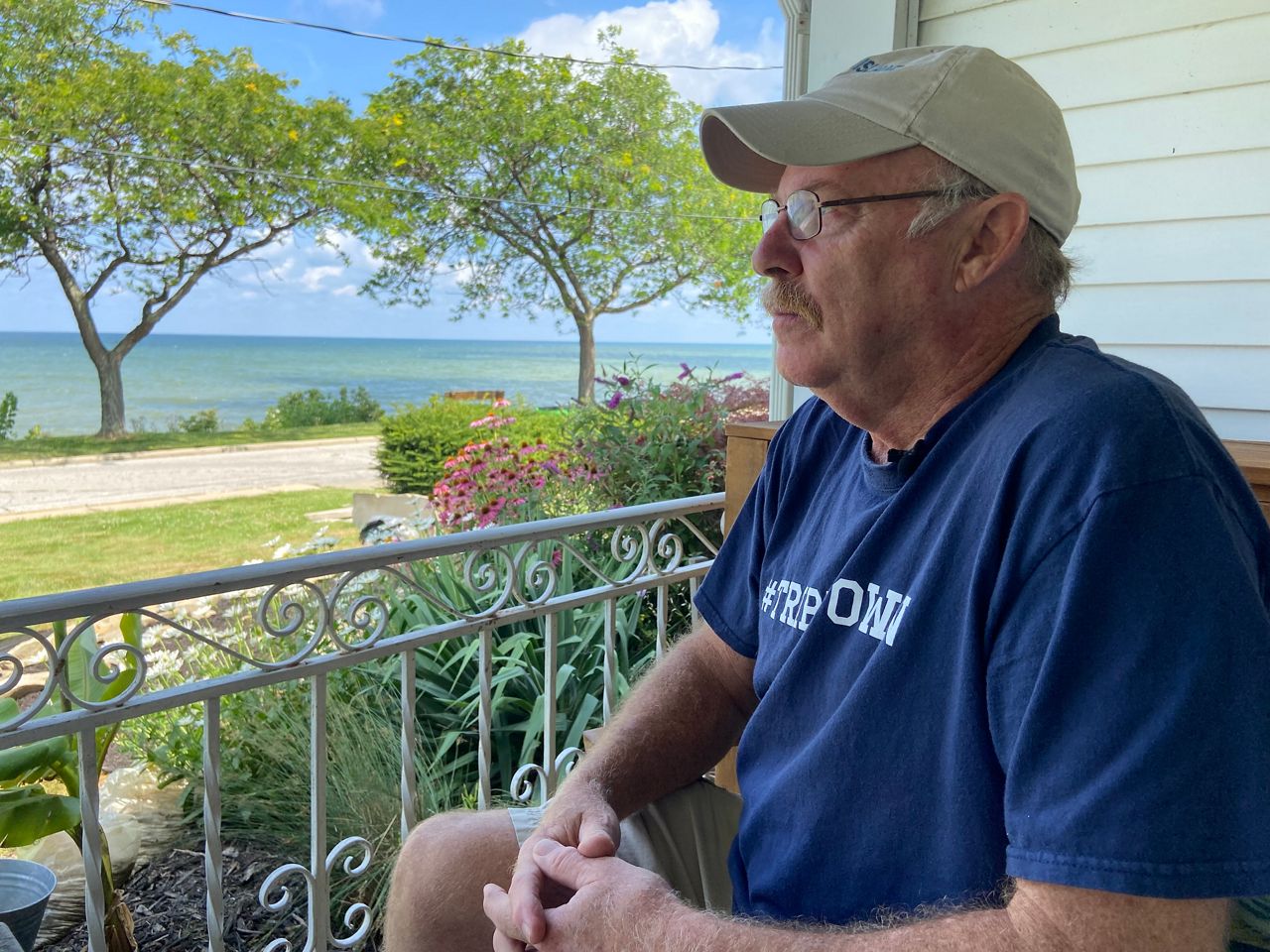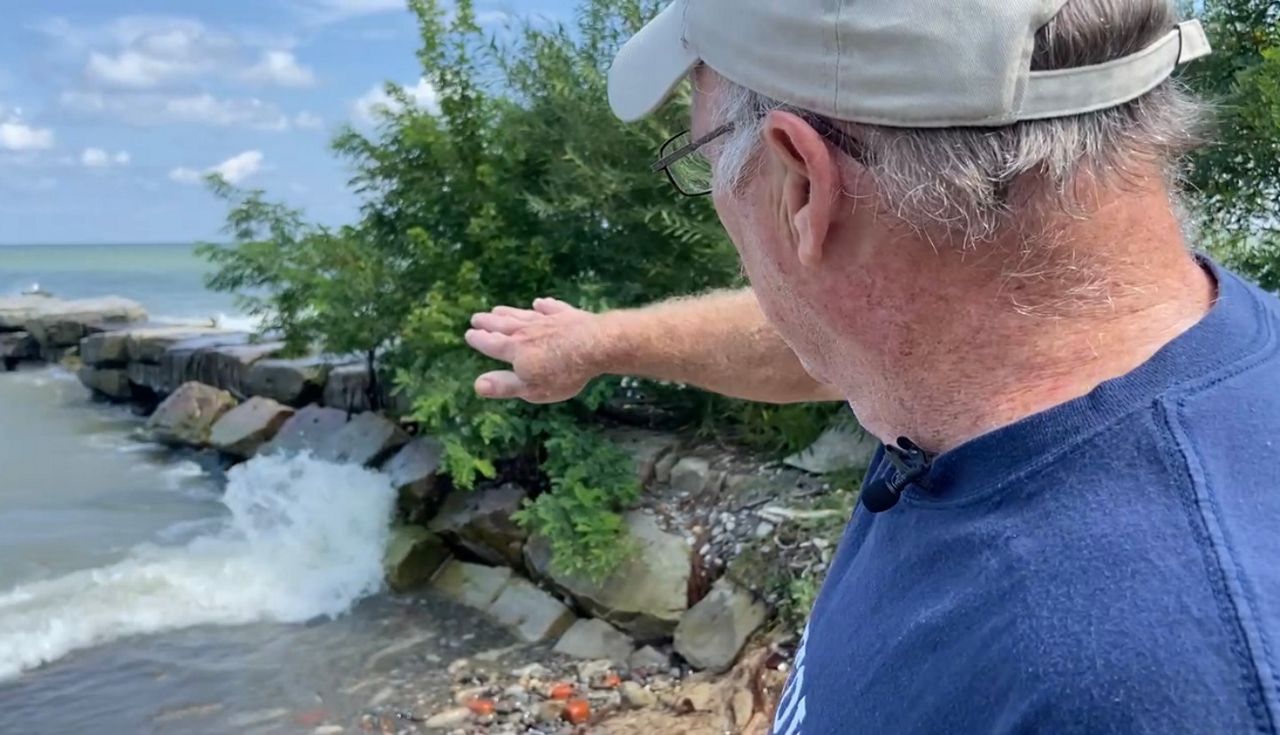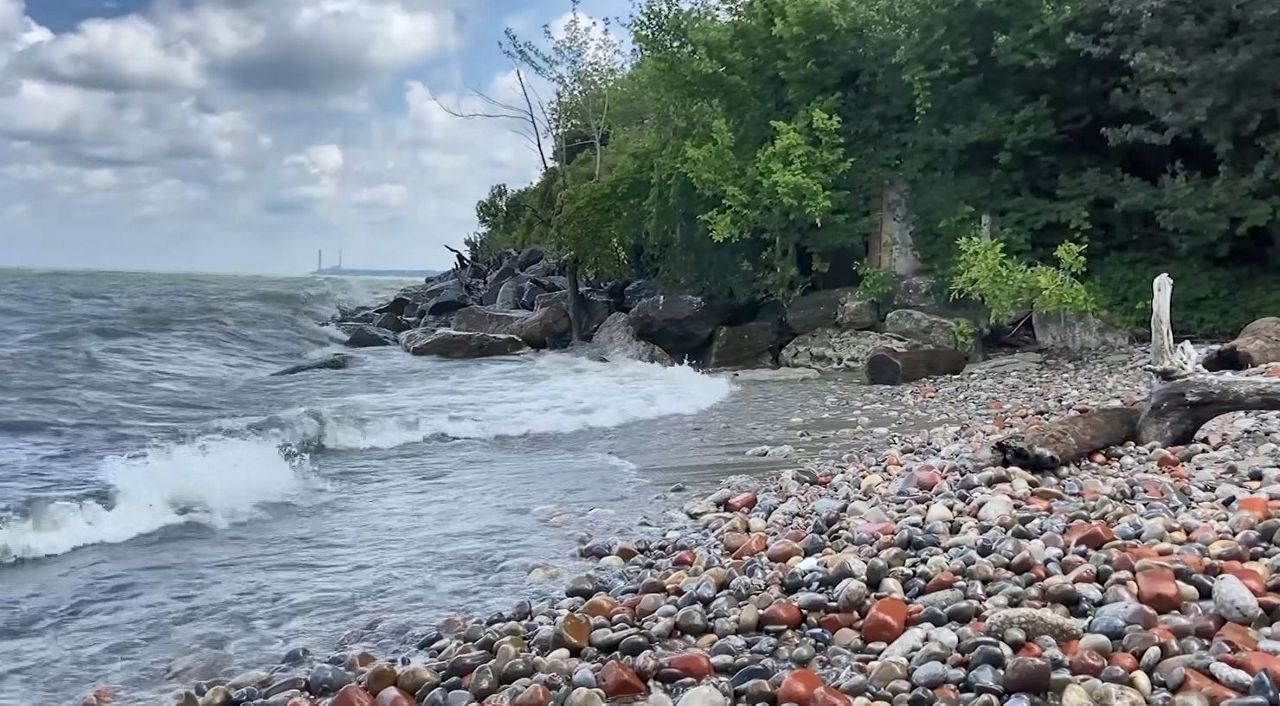CLEVELAND — A one-lane road and a narrow patch of grass lie between Greg Lawrence’s home and Lake Erie.
“It’s prime (real estate). Once you get in — and you usually get in because you know somebody,” he said. “So once you get in, you stay.”
Lawrence grew up in Euclid, graduated from Euclid High School and operates several businesses in the city like Lakeshore Coffee House and HRI Realty Group. He settled into his lakeshore home with his family in 1988.
One of the deciding factors for purchasing the home was that it had adequate erosion control, which he didn’t have to finance himself. Before he moved in, a break wall was installed to protect against erosion.
“It’s about $1,000 a foot to put in breakwall material, so it’s pretty expensive. I was able to avoid a $60,000 to $75,000 breakwall at that time,” he said.
Today, if Lawrence didn’t have the breakwall or couldn’t afford to pay for one, he’d be eligible to petition the city of Euclid to form a special improvement district (SID).
Euclid and 12 municipalities in Lake County have incorporated a SID to help homeowners on the lakefront pay for erosion control.

This particular SID was created after SB 51 passed in 2018. The bill added shoreline improvement projects to the list of public projects that can be financed by a special improvement district. The SID was incorporated as a nonprofit in March.
“It [SID] gives them access to favorable financing through the issuance of tax exempt bonds, and it also allows them to spread the payments out and get them collected through special assessments on their taxes,” said Amanda Gordon, an attorney at McDonald Hopkins LLC, who organized and oversees the SID.
Gordon said the program should make financing erosion control projects easier for homeowners than finding personal loans in their own names at higher interest rates.
To form the SID, one property owner in need of erosion control services can petition their city, township or village to help finance and construct projects to protect properties against erosion, according to Gordon. The petition must be approved by the governing body of the city or municipality before the SID is established.
Property owners in the SID will then sign a second petition to request the construction to begin and be financed through the program.
The Ohio Department of Natural Resources assists with engineering and design work of the projects, according to Scudder Mackey, the chief of the Office of Coastal Management. ODNR ensures the necessity of the project, it's impact on water quality, the environment and surrounding properties.
Mackey said the SID can be a very useful program because it can offer assistance to multiple adjacent properties along the shoreline instead of just one at a time.
“It will be consistent, and it will work together. In other words, you won't have adverse impacts to adjacent property owners if you're all protecting yourself at the same time. So we sort of encourage the larger projects if we can,” he said.
An individual homeowner can petition for the SID whether neighboring properties want to be a part of it or not. Once a community has a SID formed, anyone in that community can go through the process.

The 12 communities in Lake County that are deemed a special improvement district are Eastlake, Willoughby, North Perry Village, Mentor-on-the-Lake, Mentor, Willowick, Village of Lakeline, Village of Timberlake, Fairport Harbor, Painesville, Perry Township and Madison Township.
Erosion isn’t a new obstacle for properties along the lakeshore. Water levels were intense in 2019, according to Paul Palagyi, the executive director of Lake Metroparks. He said they can fluctuate depending on factors like heavy and consistent storms and the direction of wind.
“It's the high water level in conjunction with large sustained storms. And the erosion that occurs can be very different depending upon the direction of the wind and the waves in that storm,” Palagyi said.
Palagyi said a seiche is among the more important factors when analyzing erosion. A seiche is a standing wave oscillating in a body of water.
It typically occurs when strong wings and rapid changes in atmospheric pressure push water from one end of a body of water to the other, according to the National Oceanic and Atmospheric Administration. As the wind stops, water begins to swing back and forth for hours or sometimes days.
The NOAA reports that Lake Erie is known for seiches when the winds blow from southwest to northeast. A seiche in 1844 created a 22 foot wave that breached a 14 foot high wall, killing 78 people. In 2008, another created 12 to 16 foot high waves that led to flooding near Buffalo, New York.
Palagyi said a common misconception about erosion is that it increases as water levels increase. Water levels do fluctuate, but that shouldn’t necessarily raise panic, according to Palagyi. Between 2000 and 2020, the average water level of Lake Erie was about 572 feet, which is about three feet lower than the 575 foot highs the lake saw in June 2019, according to the Army Corps of Engineers.
Lake Erie’s water level was at 573.33 feet in early July, which is still on the high end historically, according to Palagyi. It’s still lower than the highs seen two years prior.
In February of 2003, the lake saw some of its lowest levels in 20 years at approximately 570 feet.
While water levels may decrease access to public beaches and parks along the shoreline, Debi Beck, the assistant chief of the Office of Coastal Management at the Ohio Department of Natural Resources, said that they will return.
“I think we also need to understand that water level fluctuation is a natural process and it's always going to happen. So just because water levels go up, doesn't mean they're not going to go back down,” she said.
August 30 Editor's Note: This story has been updated to reflect the correct spelling of Amanda Gordon's name.



